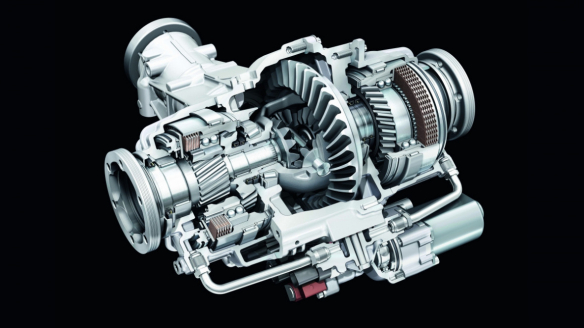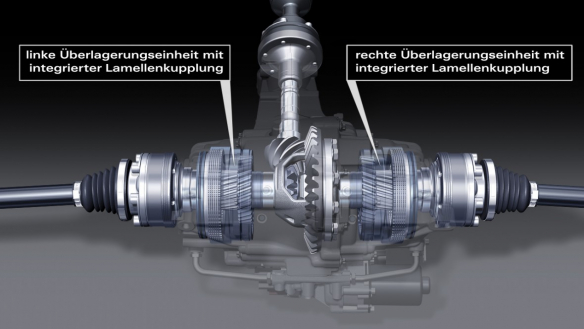Sport differential
The self-locking center differential in the classic quattro drivetrain does an excellent job of distributing the power between the axles. To make driving even more dynamic, Audi introduced an additional component in the dynamic S4 Sedan in late 2008 that actively splits the torque between the wheels of the rear axle – the sport differential.
The sport differential is a state-of-the-art rear differential. A superposition gear comprising two sun gears and an internal gear was mounted on the left and the right of a conventional rear differential. It turns 10 percent faster than the drive shaft.
A multi-plate clutch in an oil bath and operated by an electrohydraulic actuator provides the power connection between the shaft and the superposition gear. When the clutch closes, it steplessly forces the higher speed of the superposition stage on the gear. Being forced to turn faster results in the additional torque required being drawn off from the opposing wheel on the inside of the curve via the differential. In this way nearly all of the torque can be directed to one wheel. The maximum difference between the wheels is 1,800 Nm (1,327.61 lb-ft).
The sport differential is just as effective while coasting as it is under load. It is electronically controlled and reacts within a few hundredths of a second. Audi developed the software itself. The controller quickly and constantly recalculates the ideal distribution of the forces for each driving situation as a function of the steering angle, yaw angle, lateral acceleration, speed and other information.
Vehicles with conventional axle drives tend to understeer in fast corners. With the sport differential, it is like riding on rails. When turning into or accelerating in a curve, the majority of the torque is directed to the outside wheel, pushing the car into the curve. The system thus nips any tendency toward oversteer or understeer in the bud.
Status 04/2014

